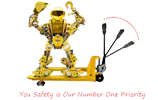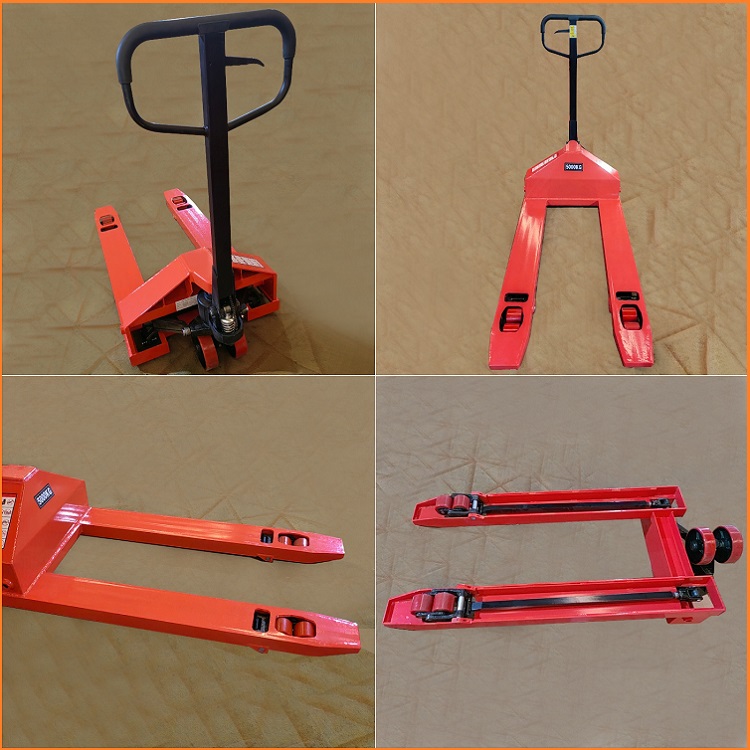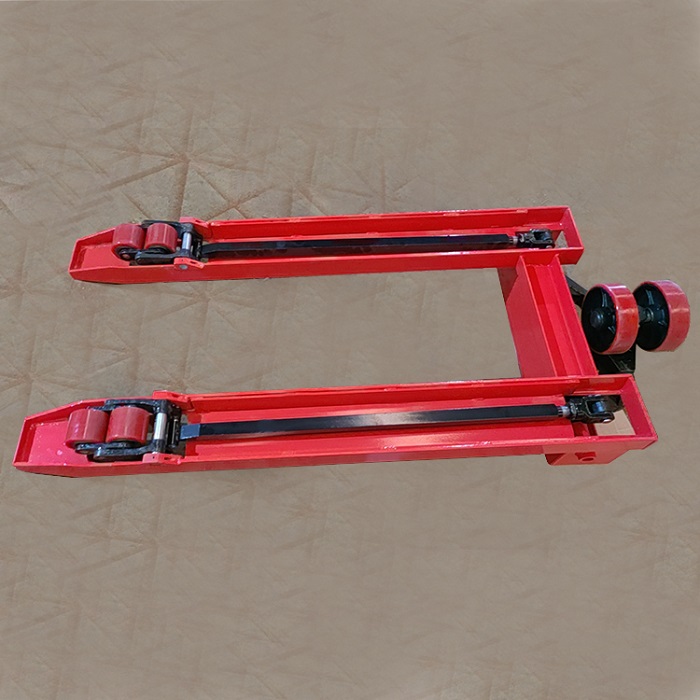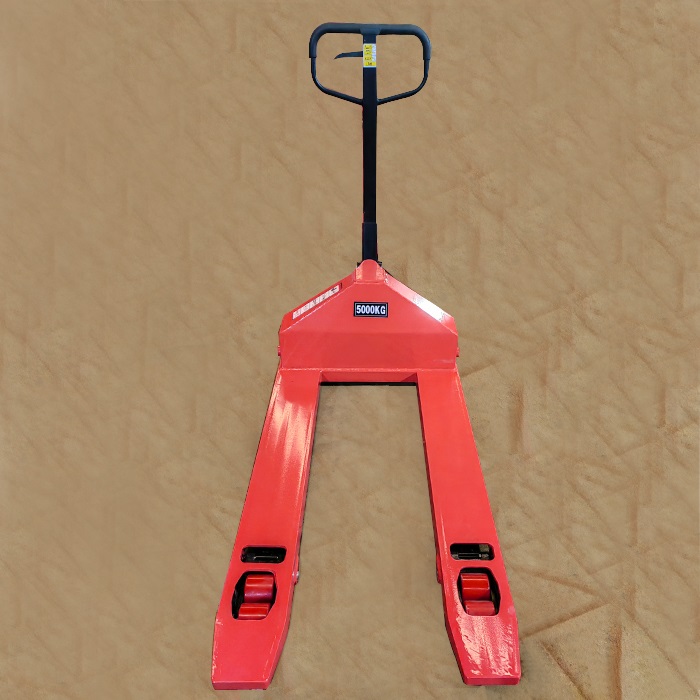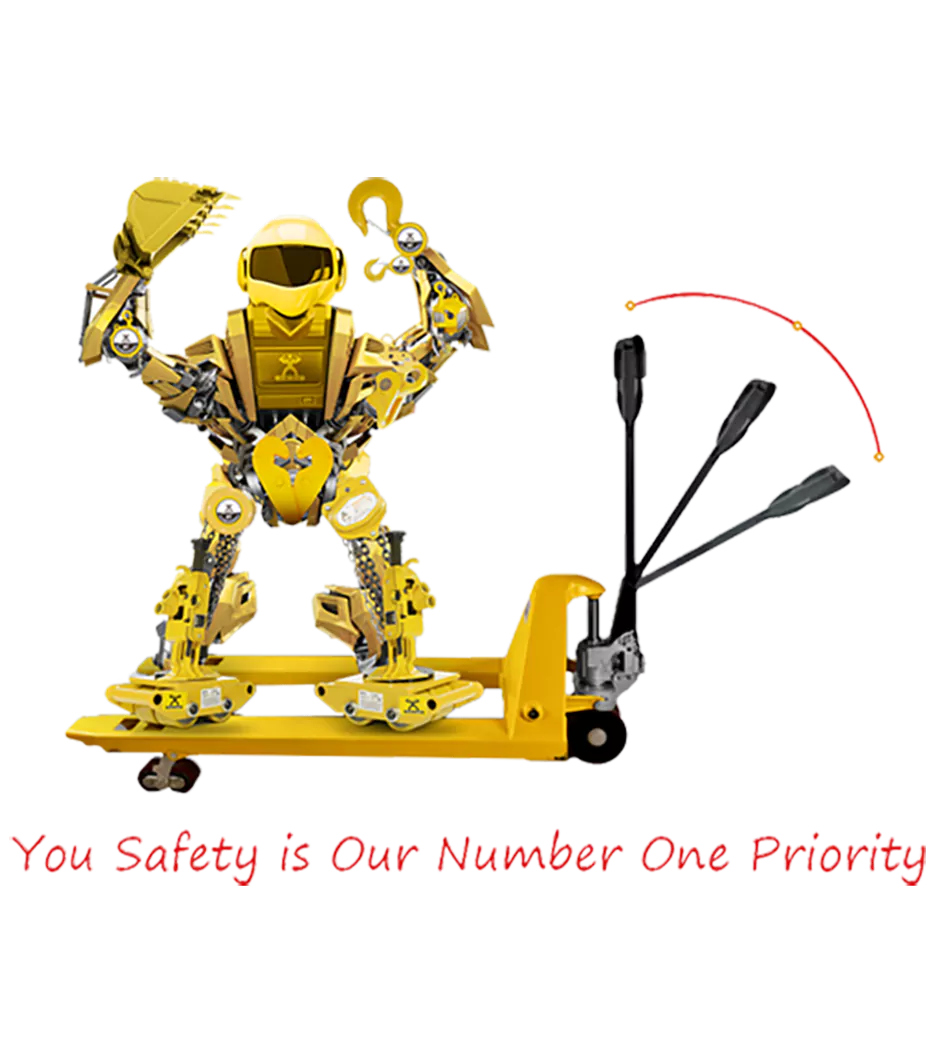In the bustling world of logistics and warehouse management, efficiency is paramount, and the hydraulic pallet jack stands as a cornerstone tool in streamlining operations. Whether in a bustling distribution center or a small-scale storage facility, understanding the intricacies of this indispensable equipment is crucial for maximizing productivity and safety.
From its basic functionality to advanced operational techniques, there exists a wealth of essential knowledge that every warehouse operator and logistics professional should possess.
In this comprehensive guide, we delve into the important aspects of hydraulic pallet jacks, equipping readers with the insights needed to harness the full potential of this indispensable tool. Without any further delay, let’s begin with our article.
What is a hydraulic pallet jack and how does it work?
A hydraulic pallet jack, also known as a pallet truck or pallet jack, is a material handling tool used to lift and move pallets within warehouses, distribution centers, and other industrial settings. It is a manual or electric-powered device designed to make the process of transporting heavy loads on pallets more efficient and ergonomic for operators.
How does a Hydraulic Pallet Jack work?
- Positioning the Pallet: The operator positions the forks of the pallet jack beneath the pallet, ensuring that the forks are centered and fully inserted into the pallet openings.
- Lifting the Load:The operator pumps the lever or handle of the pallet jack, activating the hydraulic pump. As the pump builds hydraulic pressure, it causes the hydraulic cylinder to extend, lifting the forks and the attached pallet off the ground.
- Transporting the Load:Once the load is lifted, the operator can maneuver the pallet jack by pushing or pulling the handle in the desired direction. The wheels allow for easy movement across the floor, even when carrying heavy loads.
- Lowering the Load:When the pallet jack reaches its destination, the operator slowly releases the pressure on the hydraulic pump, allowing the forks to lower the pallet back to the ground gently. This is typically done by pulling a release lever or knob on the handle.
Hydraulic pallet jacks are designed to be user-friendly, efficient, and durable, making them indispensable tools for material handling operations. They are available in various capacities and configurations to accommodate different load sizes and requirements, providing a versatile solution for transporting palletized goods in industrial environments.
2. What are the main components of a hydraulic pallet jack?
The following are important components of a hydraulic pallet jack.
- Fork: The fork is a flat, rectangular platform that is inserted beneath the pallet to lift and move it. It typically has tapered ends to facilitate easy entry into pallet openings.
- Lever or Handle: The lever or handle is used by the operator to control the lifting and lowering of the forks. It may also serve as a steering mechanism to maneuver the pallet jack.
- Hydraulic Pump:The hydraulic pump is the mechanism responsible for lifting the forks. It is activated when the operator pumps the lever or handle, creating hydraulic pressure that raises the forks off the ground.
- Hydraulic Cylinder:The hydraulic cylinder is a sealed tube containing a piston connected to the forks. When hydraulic pressure is applied, the piston moves upward, raising the forks.
- Wheels:Pallet jacks are equipped with wheels that allow for smooth movement across floors. They typically have two large wheels located at the front of the jack and one or two smaller wheels at the rear.
What are the advantages of using a hydraulic pallet jack over other types of pallet jacks?
Hydraulic pallet jacks for sale offer several advantages over other types of pallet jacks, making them a preferred choice for many material handling applications. Here are some of the key advantages:
- Ease of Use:
Hydraulic pallet jacks are generally easy to operate, requiring minimal physical effort from the operator to lift and maneuver heavy loads. The hydraulic system enables smooth and controlled lifting and lowering of the forks, reducing strain and fatigue during use.
- Efficiency:
Hydraulic pallet jacks are efficient tools for moving palletized loads quickly and safely within warehouses and other industrial settings. The hydraulic lifting mechanism allows for rapid elevation of the forks, enabling swift loading and unloading of goods.
- Versatility:
Hydraulic pallet jacks are versatile equipment that can handle a wide range of pallet sizes and load weights. They come in various capacities, fork lengths, and configurations to accommodate different material handling requirements, making them suitable for diverse applications.
- Maneuverability:
Hydraulic pallet jacks are designed for easy maneuverability in confined spaces and narrow aisles. The compact size and smooth-rolling wheels enable operators to navigate around obstacles and tight corners with precision, enhancing productivity in congested work environments.
- Durability:
Hydraulic pallet jacks are built to withstand heavy-duty use in demanding industrial environments. They are constructed from sturdy materials such as steel or reinforced aluminum, with robust components that can endure frequent loading, unloading, and transportation of heavy loads.
- Safety:
Hydraulic pallet jacks are equipped with safety features such as overload protection mechanisms and ergonomic handle designs to ensure the safety of operators and prevent accidents. The hydraulic system provides smooth and controlled lifting, minimizing the risk of sudden drops or instability while handling loads.
- Cost-Effectiveness:
Hydraulic pallet jacks offer a cost-effective solution for material handling tasks compared to alternative equipment such as forklifts or powered pallet trucks. They require less maintenance and have lower operating costs, making them an economical choice for businesses of all sizes.
- Accessibility:
Hydraulic pallet jacks are accessible to a wide range of users, including those with limited physical strength or mobility. The ease of operation and ergonomic design make them suitable for use by operators of varying skill levels, contributing to increased efficiency and productivity in the workplace.
What are the different types and variations of hydraulic pallet jacks available in the market?
In the market, there are several types and variations of hydraulic pallet jacks available, each designed to meet specific material handling needs and preferences. Here are some of the common types and variations:
1. Manual Hydraulic Pallet Jacks:
Standard Manual Pallet Jacks: These are the most common type of hydraulic pallet jacks and are operated manually by pumping the handle to lift and lower loads.
Low-Profile Manual Pallet Jacks: Designed for use with low-clearance pallets or containers, these pallet jacks have a lower profile to accommodate pallets with reduced ground clearance.
2. Electric Hydraulic Pallet Jacks:
Electric Powered Pallet Jacks: These pallet jacks feature an electric motor that assists with lifting and maneuvering loads, reducing operator effort and increasing efficiency.
Walkie Electric Pallet Jacks: Controlled by a handlebar, walkie electric pallet jacks are operated by walking alongside the equipment, providing greater control and maneuverability.
3. High-Lift Hydraulic Pallet Jacks:
High-Lift Pallet Jacks: Also known as scissor lift pallet jacks, these models feature a scissor lift mechanism that allows for lifting pallets to higher heights, facilitating loading and unloading at elevated levels.
High-Capacity Hydraulic Pallet Jacks: Designed to handle heavier loads than standard pallet jacks, high-capacity models feature reinforced frames, larger wheels, and higher weight capacities to accommodate heavy-duty applications.
4. Specialty Hydraulic Pallet Jacks:
Stainless Steel Pallet Jacks: Constructed from corrosion-resistant stainless steel, these pallet jacks are suitable for use in environments where hygiene and cleanliness are essential, such as food processing facilities or pharmaceutical warehouses.
Explosion-Proof Pallet Jacks: Engineered with special components and materials to prevent sparks and static electricity, explosion-proof pallet jacks are designed for use in hazardous environments where flammable materials are present.
5. Customizable Hydraulic Pallet Jacks:
Custom Fork Lengths: Some manufacturers offer hydraulic pallet jacks with customizable fork lengths to accommodate specific pallet sizes or applications.
Custom Color Options: Pallet jacks can be customized with different color options for aesthetics or to match corporate branding.
What are the weight capacities of hydraulic pallet jacks and how do you choose the right one for your needs?
The weight capacities of hydraulic pallet jacks vary depending on the specific model and design. Standard manual and electric hydraulic pallet jacks typically have weight capacities ranging from 2,000 to 5,000 pounds (907 to 2,268 kilograms). High-capacity models can handle even heavier loads, with weight capacities exceeding 10,000 pounds (4,536 kilograms).
To choose the right hydraulic pallet jack for your needs, several factors must be considered. Firstly, determine the maximum weight of the loads you will be handling. It’s essential to select a pallet jack with a weight capacity that exceeds the heaviest load you anticipate moving to ensure safe and efficient operation.
Consider the frequency of use and the intensity of the workload. For frequent or heavy-duty use, opt for a pallet jack with a higher weight capacity and durable construction to withstand constant use without premature wear or damage. The size and dimensions of the loads you’ll be handling also play a crucial role.
Ensure that the forks of the pallet jack are wide and long enough to accommodate your specific load sizes without compromising stability or safety. Furthermore, evaluate the operating environment where the pallet jack will be used. Factors such as floor conditions, aisle widths, and obstacles can affect maneuverability.
Choose a pallet jack with the appropriate wheel size and configuration for smooth movement in your specific environment. Finally, consider any special requirements or features you may need, such as stainless steel construction for use in corrosive environments or scissor lift mechanisms for lifting loads to higher heights. By carefully considering these factors, you can select the right hydraulic pallet jack that meets your specific material handling needs and requirements.
Conclusion:
In conclusion, if you’re in the market for a reliable hydraulic pallet jack, look no further than Gongyougroup. With their expertise in manufacturing and developing hydraulic pallet jacks and related equipment, they stand as a professional and trusted company in the industry. Contact Gongyougroup today to get a quote and experience the efficiency and quality they offer firsthand.
